Clueless, Easy A, and Romeo + Juliet: Best Movie Modernizations of Classic Literature
Updating a classic can be tough, but when things work out, it leaves everyone feeling pretty.
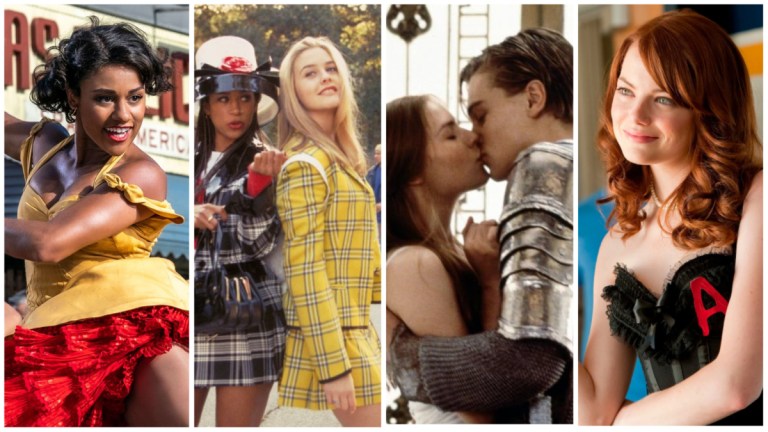
What makes a story a “classic?” It’s a vague yet glorious distinction applied to books, films, art, and even models of vintage cars whose value is passed down from one generation to the next. But is it just the length of time a text or work survives that qualifies it as a “classic” or is there something more?
Generally speaking, the classics that tend to be celebrated one generation after another, and especially those that are passed down from one century to another, are works that speak of something timeless. The times we live in will change, culture will change, and even our values change. But the experience of living, of loving, of losing (to name just a few such topics)? Those will remain as universal as the human experience is long.
Hence adapting a classic work for a modern audience, whether on film, television, or TikTok, is admirable. But completely re-contextualizing it for a modern setting and making it land? That’s something else altogether marvelous. Thus we have put our heads together to list out in alphabetical order the best movie modernizations of classic literature.
*Editor’s Note: We are using “literature” as a catch-all term, which means plays will be included. Additionally, modernizations need to be set in a close to modern world, with the period being either during or near the filmmakers’ lifetimes as opposed to creating an anachronism set in the past. This is why a few movies like Moulin Rouge! and A Knight’s Tale are not on the list.
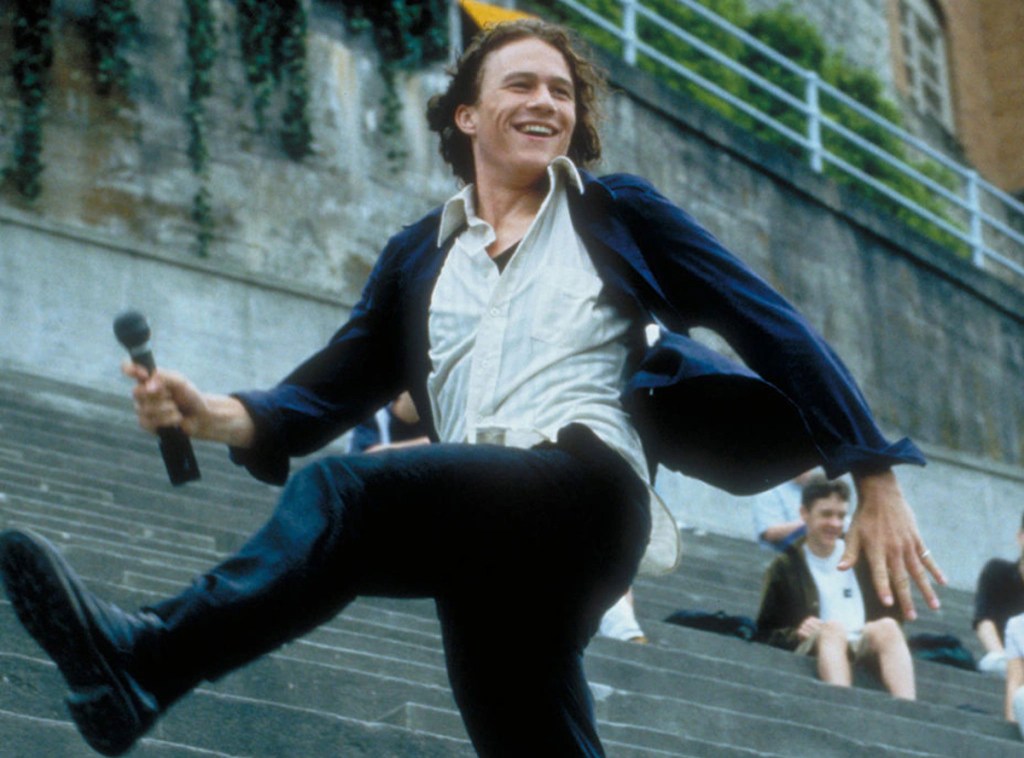
10 Things I Hate About You (1999)
Jumping on the then-delightfully ‘90s bandwagon of remaking classic novels and plays with today’s loquacious teenagers, 10 Things I Hate About You might not be the most original movie on this list (which is perhaps why it was unfairly dismissed by older middle-aged critics at the time). But there are few movies as purely beguiling as the moment where a young Heath Ledger picks up a microphone and starts belting out the Four Seasons to Julia Stiles on the football field behind their absurdly picturesque high school. Seriously, their school learning is inexplicably in a castle on a hill!
That, too, feels like a cheeky nod to the movie’s source material, William Shakespeare’s The Taming of the Shrew. That Elizabethan romantic comedy, which is in turn set in Renaissance Italy, doesn’t necessarily have the most up to date gender dynamics. Yet there’s something truthful about the film’s scenery-chewing Larry Miller (Walter Stratford), an overly protective father who will not allow his youngest daughter Bianca (Larisa Oleynik) to date until her older sister Kat (Stiles), who is a senior at their high school, also does. He does this because he thinks Kat is the unpopular alt-girl who has no time for guys… that is until shy Cameron (babyfaced Joseph Gordon-Levitt) convinces Ledger’s rebel without a cause to pick Kat up for money.
By adapting the Bard, 10 Things highlights the bones of the modern rom-com with their often overly complicated plots that end in laughs and kisses. It’s also still very funny in that self-aware ‘90s way as Stiles and Ledger prove to be less oil and water than peanut butter and jelly. It’s sweet, fun, and features a ska band singing to no one in particular from the rooftop of a castle. Remember ska? Yeah…

Apocalypse Now (1979)
Not necessarily the type of movie you’d expect to see on a list like this, huh? Whereas most modernizations of classic literature are presented with some degree of self-awareness and bemusement, Francis Ford Coppola’s Apocalypse Now is as serious as a heart attack. He should know since his film drove the star, a young Martin Sheen, to actual cardiac arrest during the movie’s legendarily mad production in the Philippines.
Dreamed up by Coppola pals John Milius and George Lucas (yes that one) as an indie project to do out of college, with Lucas just as insanely wanting to film this in the jungles of Vietnam while the war was still going on in the early 1970s, Apocalypse Now became one of the most iconic monuments to ‘70s era Hollywood worship of the auteur and the commerce it could once bring. The film is also a relatively faithful thematic adaptation of Heart of Darkness, Joseph Conrad’s 1889 novel with a colonialist (and thereby racist) vision of Africa.
Conrad’s fever dream about Western civilization becoming lost to madness in the “dark continent,” is re-contextualized as a psychedelic nightmare vision of the Vietnam War. Martin’s Capt. Willard is a U.S. Army assassin (or “errand boy”) sent up river to execute with extreme prejudice a man called Kurtz (Marlon Brando), a colonel who went native. Brando’s bizarre mumblings at the end in front of a an actual ritualistic sacrifice of a bull is well remembered, but it’s the hellish journey getting there (and the horror of capturing it on film) that makes Apocalypse Now so evocative as it floats down a river drenched in blood, cynicism, and, strangely enough, Wagner music to signal the arrival of American imperialism.
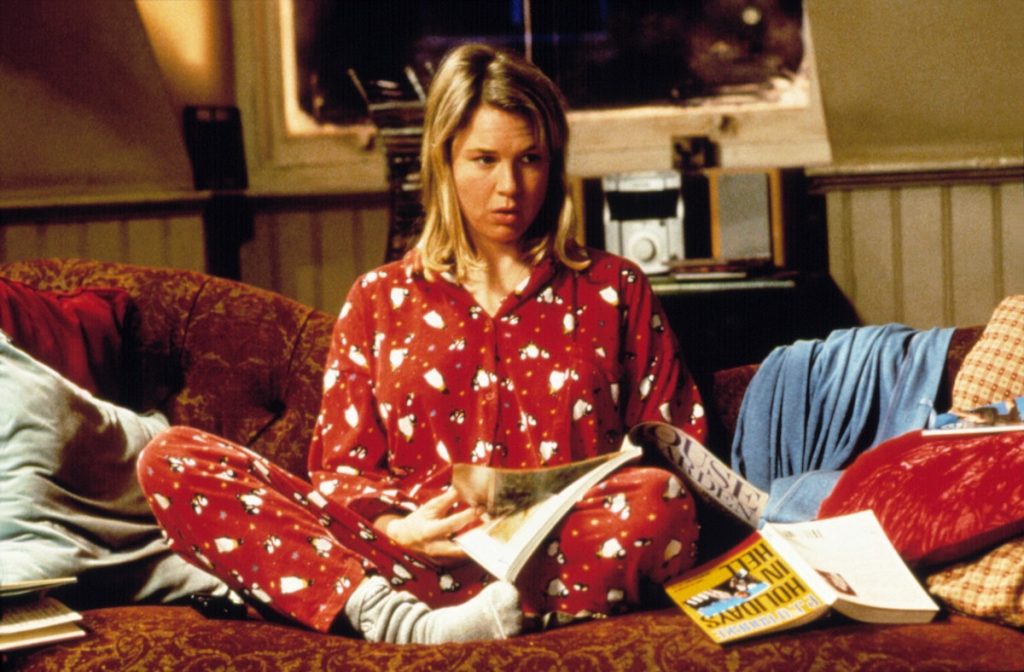
Bridget Jones’s Diary (2001)
Three highly successful movies in and Bridget Jones has become a bit of a national treasure in the UK despite being (excellently) played by American Renée Zellweger. Based on Helen Fielding’s novel, it’s a modern interpretation of Jane Austen’s Pride and Prejudice, with Bridget as a 30-something working in publishing who’s trying to cut down on booze and fat, and worrying about her weight.
Bridget’s Mr. Darcy is Colin Firth’s Mark, a childhood friend who appears initially cold and judgmental but eventually thaws to Bridget’s charms. More fun is Hugh Grant as Bridget’s caddish boss Daniel Carver, who she flirts with mercilessly. It’s a funny, good-natured romance that is faithful to the spirit, if not the letter, of Austen’s text.
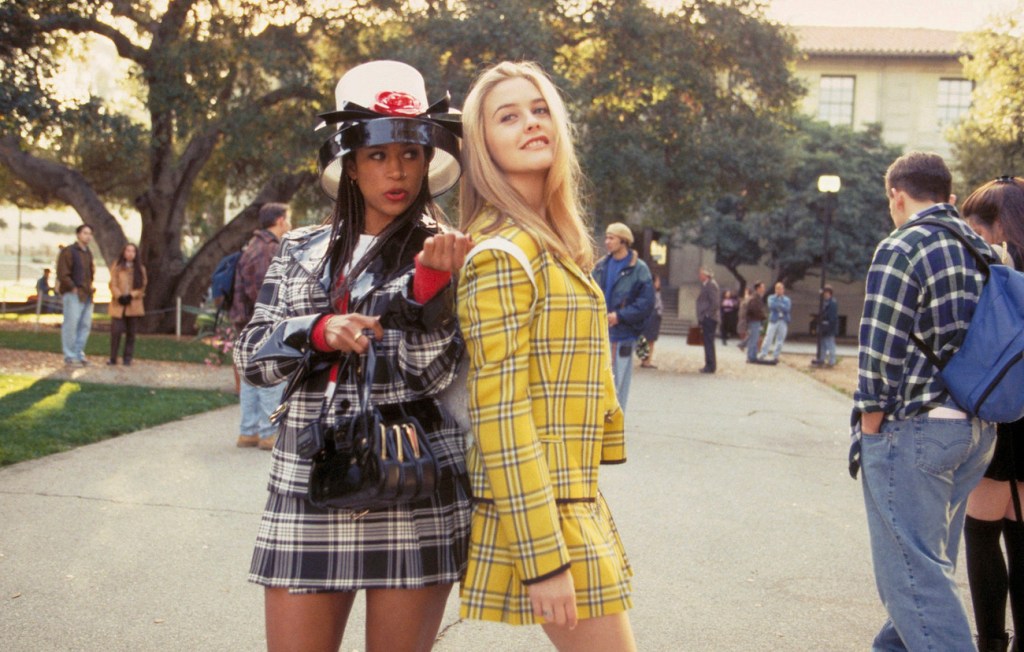
Clueless (1995)
As THE ‘90s teen comedy remake of a classic by which all others are judged, Amy Heckerling’s Clueless remains the gold standard that makes everyone else look like a Monet: pretty from a distance but a hot mess close up. A movie both written and directed by Heckerling, the filmmaker who gave teens of the ‘80s a generational anthem in Fast Times at Ridgemont High (1982) does so again here, but this time she designs her film from the ground up.
By adapting Jane Austen’s most mischievous novel Emma, Clueless mirrors that classic about a conceited, wealthy, and ultimately well-meaning young woman, and throws her into 90210 era Beverly Hills. It’s fabulous, as is Alicia Silverstone in a star-making role as Cher, the most fashionable girl in her high school (and probably her continent). Cher’s the kind of scion who enjoys shopping, procrastinating on homework, and playing matchmaker when she isn’t flirting with her former step-brother Josh (the forever young Paul Rudd).
It could be cloying in lesser hands, but Heckerling and a vivacious Silverstone lead a winning ensemble while reframing Austen’s observations about the dating rituals of the young for a new era. Quite literally, too, since Heckerling’s master stroke was not attempting to mimic the slang and fads of the young but to instead create her own trenchant vocabulary for a fictional youth culture that seeped into our real one. As if!
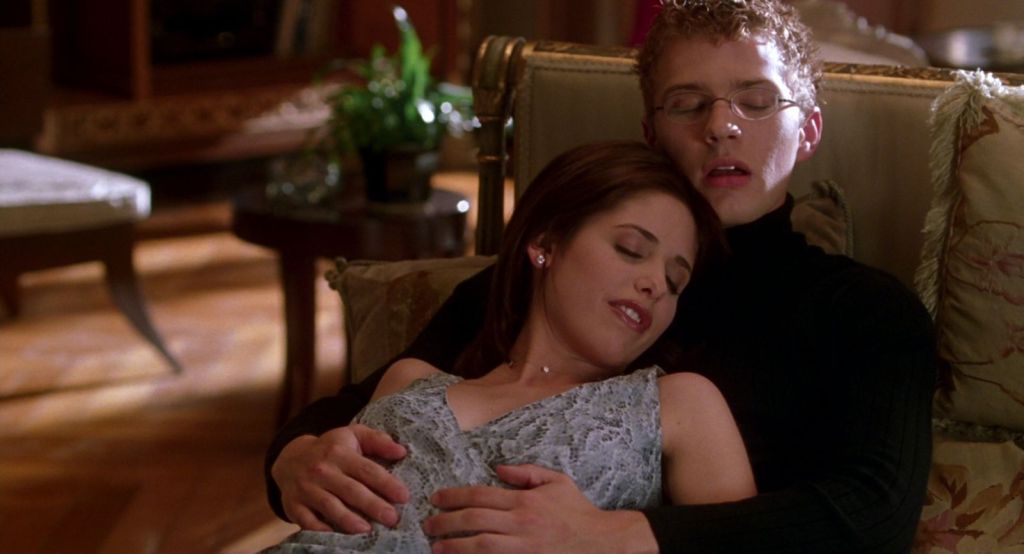
Cruel Intentions (1999)
Considered quite risqué when it came out in 1999, this Manhattan prep school-set update of the 18th century French novel Les Liaisons Dangereuses is a sexy teen movie with a none-more-‘90s cast. Sarah Michelle Gellar stars as rich bitch Kathryn Merteuil who makes a wager with her stepbrother Sebastian Valmont (Ryan Phillippe) to have his way with prim new girl Reese Witherspoon before term starts.
While it might lack the drama and tragedy of Stephen Frears’ 1988 period adaptation with Michelle Pfeiffer, Glenn Close, and John Malkovich, Cruel Intentions is rather more fun and trashy in the best possible way. It’s glossy wish fulfillment with a cast in their prime, which will probably be best remembered for a very particular bit of shared spit during a kiss between Gellar and Selma Blair as the naive Cecile.

Easy A (2010)
The teen comedy that made Emma Stone a household name, Easy A is a good-natured and mirthful comedy about the silly sex lives of teenagers. In other words, it should have almost nothing to do with Nathaniel Hawthorne’s The Scarlet Letter, an 1850 novel about the tragic repression of 1600s Puritans. Nonetheless, this is still a better film adaptation than the “serious” one starring Demi Moore from the ‘90s. Better still, Easy A has the chutzpah to call that fact out!
It succeeds at doing that, and so much else, because of Stone’s irresistible star persona as Olive, a happy go-lucky if slightly insecure girl living an unremarkable life at her high school. However, when she spreads an untrue rumor about losing her virginity to a college guy, things quickly spiral out of control. Faster than you can say “Jesus freaks,” her school’s young Christian community wants to brand her as the local harlot—which she accepts with maximum swagger.
It’s lightweight teen comedy tropes about self-discovery that’s elevated greatly by a superb supporting cast that includes Amanda Bynes, Lisa Kudrow, Thomas Haden Church, Malcolm McDowell, Patricia Clarkson, and the indispensable Stanley Tucci. Mostly though, this is the Emma Stone show and she dazzles in that spotlight by dropping quips like they’re payloads of charisma, singing oldies as if she were in a John Hughes movie, and otherwise announcing herself as a comedy force to be reckoned with. The movie’s standing on our list of the best comedies of the last 15 years confirms she was heard loud and clear.
Fire Island (2022)
The tattoo on the shoulder of Joel Kim Booster, the writer-producer-star of Fire Island, tells you everything you need to know. It reads “Of rears and vices I saw enough,” a quotation from Jane Austen’s Mansfield Park in which a snob boasts about her top-rank connections in the British Navy and, according to some, makes the only anal sex gag in the Austen canon. That’s Fire Island all over: funny, filthy, and very well-read.
Directed by Andrew Ahn, this gay male rom-com borrows the bones, heart, and razor tongue of Austen’s Pride and Prejudice to make a film that looks like no P&P adaptation you’ve ever seen. Instead of a country village, it’s set on iconic LGBTQ+ vacation spot Fire Island. Instead of five unmarried Bennet sisters coming into the orbit of their golden-hearted rich neighbor, his mean sisters, and his even richer, standoffish friend, it’s about five unattached gay male pals coming into… well, all that and more.
Fire Island is clever, modern, knowing yet earnest, and channels key events from the novel in surprising but perfect ways. Watch it as a bubbly queer rom-com and you’ll have a good time. But see how it translates Austen’s waspish humor and judgement of terrible people to such a fresh setting (lead characters Noah and Howie are poor and Asian-American, which brings out the worst in the island’s rich racist jerks), and you’ll want to throw a lavish ball in the film’s honor.

The Lion King (1994)
Okay, we admit this is a bit of a cheat since for all we know The Lion King is actually set in the late Middle Ages—the same era William Shakespeare set his stage at Elsinore Castle in Hamlet. Nonetheless, the movie also could’ve been intended for the savannas of ’94. Either way, there’s nothing medieval about Elton John music!
Generally considered the crowning achievement of the Disney Renaissance, The Lion King was released during the peak of Walt Disney Animation Studios’ rejuvenation under the leadership of Jeffrey Katzenberg (for better and worse). The film followed in the footsteps of future Disney classics before it like The Little Mermaid (1989), Beauty and the Beast (1991), and Aladdin (1992). But unlike those films, The Lion King is not a direct (and often unfaithful) adaptation of a classic fairy tale. Rather this is an original movie that takes the general concept of Hamlet—which in turn owes its roots to a Viking saga that later inspired The Northman—and puts that tale in a visceral world perfect for animation and musical numbers.
The story is about a young prince who is cast into exile and seeming death by an uncle who has murdered the prince’s father and taken the prince’s mother as his queen. Said prince returns to (eventually) wreak a terrible vengeance. It’s basic elemental stuff about the nature of mortality, the bonds of fathers and sons, and finally the fact that “Hakuna Matata” will be rolling around in your ol’ noodle until the day you die.
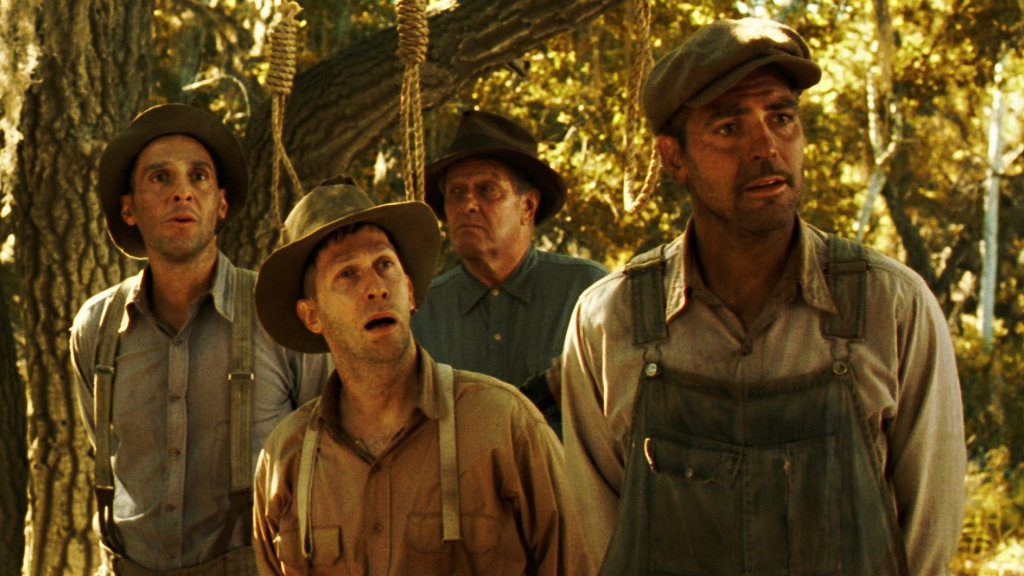
O Brother, Where Art Thou? (2000)
Does a 21st century movie set in the 1930s count as a modernization? When your source material is Homer’s The Odyssey, an epic poem written down some 2,700 years ago and likely dating back a full three millennia, it sure as Hades does! The Coen Brothers turn to that ancient Greek saga about a king who will spend a decade at sea trying to get home to his wife, and somehow find this bemusing and dryly ironic yarn about an idiot trying to escape prison before the ex-wife of their ringleader marries another man.
Starring George Clooney at his most pompous and buffoonish as Everett, the fool who convinces two other guys on his chain gang (John Turturro and Tim Blake Nelson) to bust out of the Big House, O Brother, Where Art Thou? brings a genuine affection for the beauty of Southern culture, even in a time of loss as immense as the Great Depression. And it channels that ardor into an “epic” with a tongue firmly placed in its cheek. There are monsters like John Gooman’s cycloptic Bible salesman (who turns out to be part of a real life horror called the KKK), and there are seductresses like the Sirens who tempt these dimwitted men from their mission with moonshine.
But ultimately, this is a good time with charming characters, deceptively cutting Coen dialogue, and some of the best Bluegrass music ever collected into a single soundtrack.
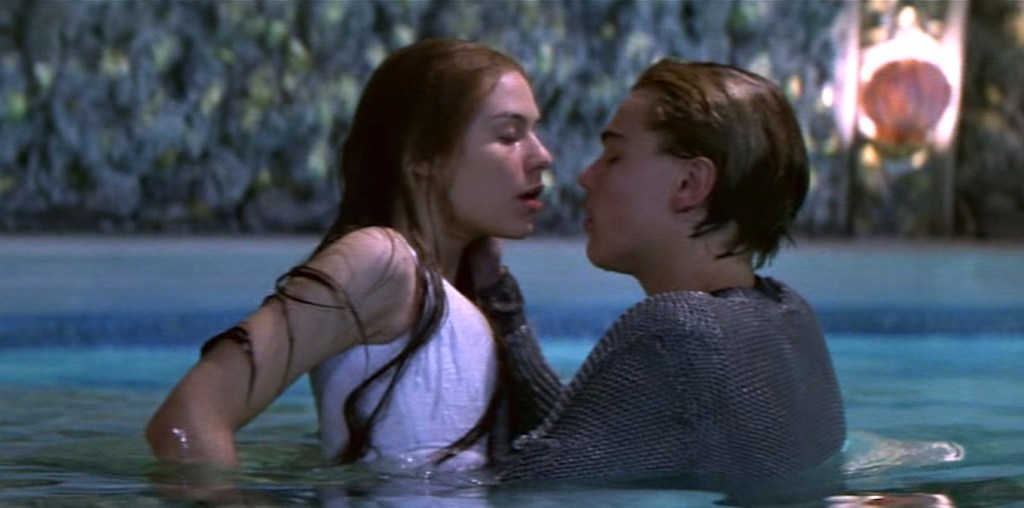
Romeo + Juliet (1996)
Baz Luhrmann has made a career out of mixing elements of the past with the present. This often means taking the modern pop music of his current moment and setting it in a fantasy version of half-remembered times gone by, be it the Parisian Bell Époch (Moulin Rouge!), Prohibition era New York City (The Great Gatsby), or the earliest days of rock ’n roll (Elvis). Yet in the movie that arguably started this trend, Luhrmann instead brought the ancient past to the startlingly modern present by filtering William Shakespeare’s Romeo and Juliet through an MTV lens. It’s brilliant.
The movie that made Leonardo DiCaprio a heartthrob before Titanic, Romeo + Juliet is anchored by two young and rough around the edges performances by Leo and Claire Danes as the eponymous star-crossed lovers. But what makes this movie soar is the sweaty operatic bravado Luhrmann, his production designer Catherine Martin, costume designer Kym Barrett, and editor Jill Bilcock bring to the proceedings. Romeo + Juliet is a dizzying, neon-lit carousel of tragedy, big emotions, and wistful mid-‘90s college rock and pop.
Watching the movie can give you vertigo, but that’s by design when the lovers pull you into their swoon as they fall from Juliet’s balcony into her Beverly Hills swimming pool. It’ll also get your blood up when the likes of John Leguizamo’s Tybalt and Harold Perrineau’s Mercutio cross “swords” by way of the all-American semi-automatic handgun.
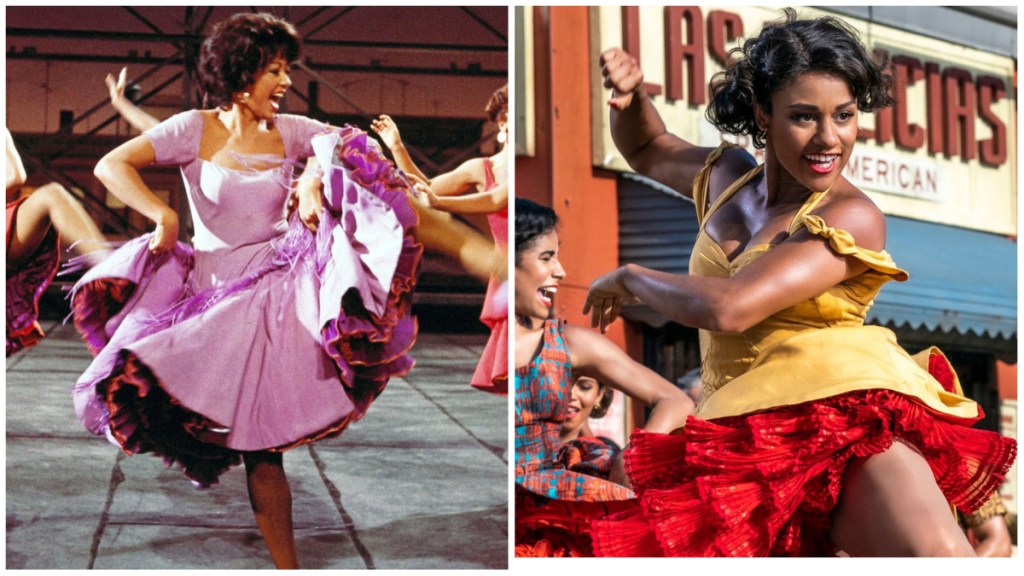
West Side Story (1961/2021)
There was another Romeo and Juliet modernization before Luhrmann’s more literal riff on the concept in the ‘90s: the seminal musical West Side Story. Created first as a Broadway show with music and lyrics by Leonard Bernstein and Stephen Sondheim, West Side Story remains for many the benchmark by which all dramatic musicals, filled with equal measures of heartbreak and joy, are measured. It’s a tale which traded in the rivalries of the Montagues and Capulets in Renaissance Italy for the then-much more timely youth and ethnic gang cultures of New York City’s Upper West Side.
The material has been adapted to film twice, and masterfully each time. The 1961 version is of course the original classic, and the version of this story that most folks think of thanks to the soaring music, and performances that are as definitive as Rita Moreno as Anita—she’s a far more fiery and independently minded young woman than Juliet’s nurse on whom she’s based! However, we genuinely prefer Steven Spielberg’s 2021 remake on the whole. The master filmmaker brings a vivid life and vitality to the music rarely seen in film musicals. As director Guillermo del Toro mused, Spielberg somehow convinces you the “camera is dancing.”
Additionally, Spielberg and screenwriter Tony Kushner made a genuine attempt to represent the Puerto Rican culture in mid-20th century America with a sense of authenticity and nuance never even considered by the creators of the original West Side Story show and movie, all while bringing a sense of acute awareness and hindsight to the racial dynamics and tensions that were omnipresent in the ‘50s, from NYC to Spielberg’s own youth out west. Plus, Ariana DeBose’s Anita is also pretty damn magnificent!
